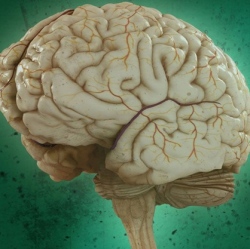
Imagination lies in a widespread neural network, the brain’s “mental workspace” that consciously manipulates images, symbols, ideas and theories and gives humans the laser-like mental focus needed to solve complex problems and come up with new ideas, Dartmouth researchers conclude in a new study.
“Our findings move us closer to understanding how the organization of our brains sets us apart from other species and provides such a rich internal playground for us to think freely and creatively,” says lead author Alex Schlegel , a graduate student in the Department of Psychological and Brain Sciences. “Understanding these differences will give us insight into where human creativity comes from and possibly allow us to recreate those same creative processes in machines.”
In the study, 15 participants were asked to imagine specific abstract visual shapes and then to mentally combine them into new more complex figures or to mentally dismantle them into their separate parts.
Researchers measured the participants’ brain activity with functional MRI and found a cortical and subcortical network over a large part of the brain was responsible for their imagery manipulations. The network closely resembles the “mental workspace” that scholars have theorized might be responsible for much of human conscious experience and for the flexible cognitive abilities that humans have evolved.
